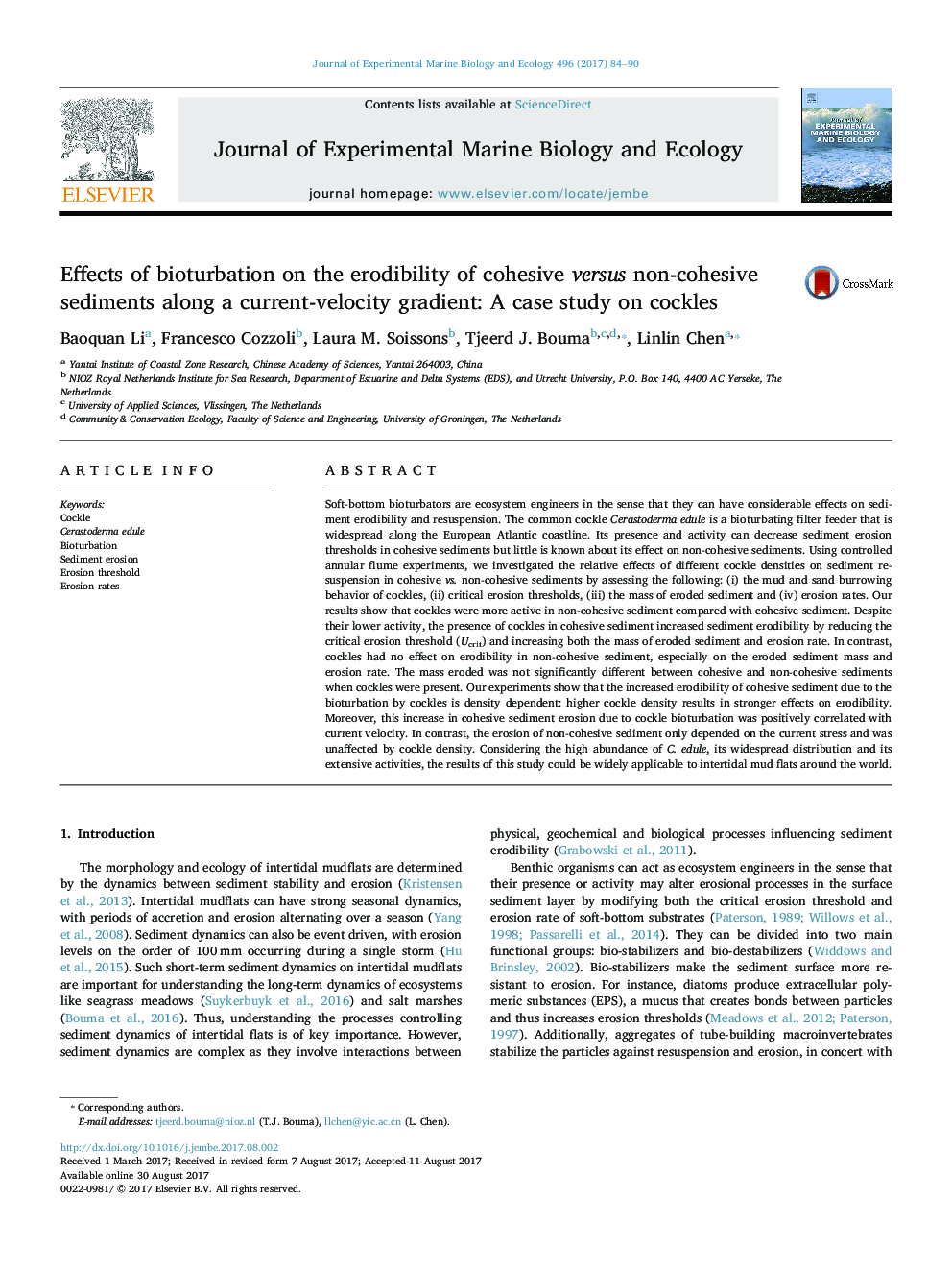| کد مقاله | کد نشریه | سال انتشار | مقاله انگلیسی | نسخه تمام متن |
|---|---|---|---|---|
| 5744542 | 1618379 | 2017 | 7 صفحه PDF | دانلود رایگان |
- Effects of bioturbation on the erodibility of cohesive versus non-cohesive sediments was investigated.
- The presence of cockles increased the erodibility of cohesive sediment.
- Cockles reduced critical erosion threshold but increased mass eroded and erosion rate.
- Bioturbating effect is positively correlated with current velocity and cockle densities.
- Erodibility of non-cohesive sediment was mostly unaffected by the presence of cockles.
Soft-bottom bioturbators are ecosystem engineers in the sense that they can have considerable effects on sediment erodibility and resuspension. The common cockle Cerastoderma edule is a bioturbating filter feeder that is widespread along the European Atlantic coastline. Its presence and activity can decrease sediment erosion thresholds in cohesive sediments but little is known about its effect on non-cohesive sediments. Using controlled annular flume experiments, we investigated the relative effects of different cockle densities on sediment resuspension in cohesive vs. non-cohesive sediments by assessing the following: (i) the mud and sand burrowing behavior of cockles, (ii) critical erosion thresholds, (iii) the mass of eroded sediment and (iv) erosion rates. Our results show that cockles were more active in non-cohesive sediment compared with cohesive sediment. Despite their lower activity, the presence of cockles in cohesive sediment increased sediment erodibility by reducing the critical erosion threshold (Ucrit) and increasing both the mass of eroded sediment and erosion rate. In contrast, cockles had no effect on erodibility in non-cohesive sediment, especially on the eroded sediment mass and erosion rate. The mass eroded was not significantly different between cohesive and non-cohesive sediments when cockles were present. Our experiments show that the increased erodibility of cohesive sediment due to the bioturbation by cockles is density dependent: higher cockle density results in stronger effects on erodibility. Moreover, this increase in cohesive sediment erosion due to cockle bioturbation was positively correlated with current velocity. In contrast, the erosion of non-cohesive sediment only depended on the current stress and was unaffected by cockle density. Considering the high abundance of C. edule, its widespread distribution and its extensive activities, the results of this study could be widely applicable to intertidal mud flats around the world.
Journal: Journal of Experimental Marine Biology and Ecology - Volume 496, November 2017, Pages 84-90
